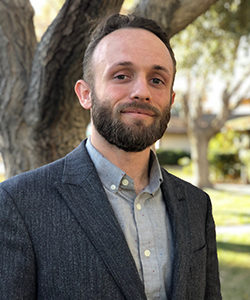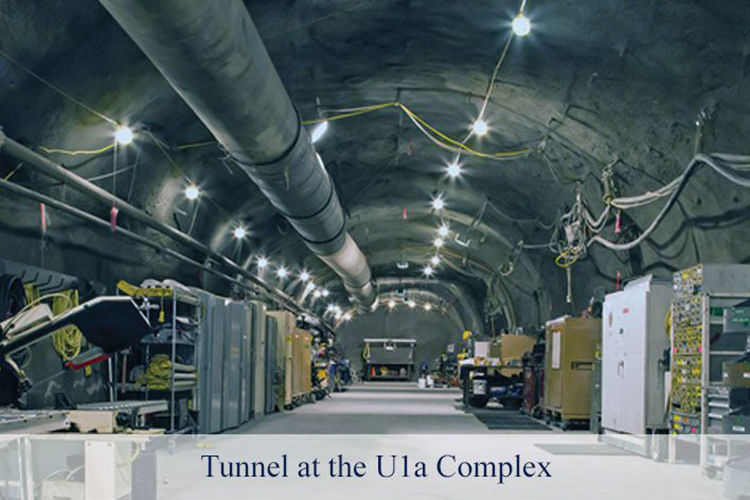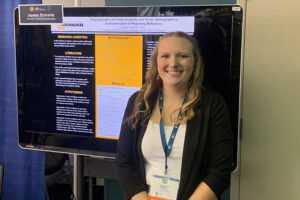Buried in the southern Nevada desert, miles from anywhere, is an underground laboratory called the U1a complex where scientists carry out experiments to ensure the safety of America’s nuclear stockpile. To reach the lab, they have to journey down a literal mineshaft, a remnant from the days of the nation’s nuclear testing. It descends nearly 1,000 feet below ground surface.
That means that Sean Breckling has a very long commute.

Breckling is a UWM alum who majored in mathematics and graduated in 2010 into a slumped economy. Faced with seemingly slim career prospects, he enrolled in graduate courses at the University of Nevada-Las Vegas, earning his PhD in applied mathematics in 2012. Upon graduating, Breckling left Nevada to build his resume via the well-worn path of post-doctoral academic research appointments. That same path led him back to Nevada.
Breckling is a senior scientist at the Nevada National Security Site, a federal research facility where scientists are tasked with helping to ensure the safety of the nation’s nuclear weapons, providing data to the Stockpile Stewardship program.
“The Nevada National Security Site has a broad mission. We manage a lot of scientific research facilities,” Breckling said. This work includes “subcritical experiments,” where scientists work with chemical explosives to generate high pressure that they apply to special nuclear materials. These experiments are conducted such that a self-sustaining nuclear chain reaction, or “criticality,” is never achieved.
Developing tools for science
One of Breckling’s roles is to support the Cygnus X-ray diagnostic machines. He describes this system “similar to the microscopes you might have used in any science class.” However, “instead of back-lighting samples with visible light, this machine uses gamma radiation.
“I do a lot of image and data processing to that end,” Breckling added. “Many of the techniques we employ would be familiar to professional photographers, but since we’re using a radiological light source, we call it radiography.”
By analyzing the images captured on Cygnus X-ray diagnostic machine, Breckling develops quantitative tools that he and other scientists use to better understand the results of their subcritical experiments.
The work is everything he could have wanted in a job.
“I’ve always gravitated to the applied sciences,” he said. “I could have wandered into any reasonably technical vocation. I’m more focused on how I work than what I work on.”
Working on medical imaging too
Even so, he’s working on a lot. In addition to his projects at the U1a complex, Breckling is also the principal investigator of a research project “highly relevant” to both his work at the NNSS and medical diagnostic imaging.
In CT medical imaging, physicians carefully capture multiple images of their patients from several angles, building a 3D reconstruction of the region of interest. For each image, patients are exposed to minute amounts of ionizing radiation.
“We are keenly interested to quantify how much 3D information can be accurately resolved using as few doses (of ionizing radiation) as possible,” Breckling said. “Physicians call this ‘dose reduction.’”
His project has received site-directed funding, so in addition to exploring the technical aspects of medical imaging and “uncertainty quantification,” or “UQ”, Breckling is also learning to lead a team, coordinate a budget and manage a project. Between the multiple projects in several locations, every day is different.
“There are some days I get to work hands-on with equipment, and some days I sit in my office writing code,” he said. “I like to call this work semi-academic, in that we’re expected to publish. The work tends to be extremely interdisciplinary, which also appeals to me.”
Unexpected career
The schedule is nice too; Breckling works 10-hour shifts four days a week and enjoys three-day weekends.
It’s not the kind of job he set out to do when he graduated, and it’s the kind of job that’s easy to miss if you’re a freshly minted mathematics PhD.
“People only look for jobs that they know exist. The problem is … when people go into the sciences, they tend to put these massive blinders on to A, where their talents would be useful, and B, where they would be happy,” he said. “I would advise anyone to keep an open mind, and to keep their eyes and ears open to possibilities that aren’t directly in their path.”
Even if those possibilities lead you down a mineshaft.








